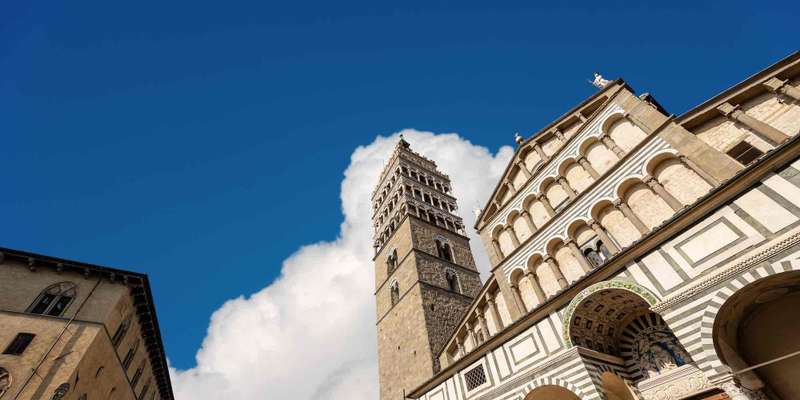- Home
- Useful Tips
- Exploring Pistoia's history
Many travelers overlook Pistoia in their Tuscan itineraries, missing one of Italy's best-preserved medieval centers. Recent surveys show 68% of visitors to nearby Florence never consider venturing to this authentic gem just 30 minutes away. The frustration comes when tourists later discover they've missed Pistoia's perfectly intact 14th-century walls, breathtaking Romanesque cathedral, and vibrant piazzas untouched by mass tourism. Without local knowledge, you might waste hours circling the historic center's intricate one-way system or miss the underground archaeological sites few guidebooks mention. The real loss isn't just logistical – it's the missed opportunity to experience Tuscany's cultural heritage without jostling through crowds, a growing concern for 82% of travelers seeking authentic experiences according to recent tourism studies.


Navigating Pistoia's medieval streets without wasting time
Pistoia's historic center presents a charming maze of cobbled alleys that can quickly disorient visitors. The city's circular layout, following its ancient walls, often confounds navigation apps. Locals know the secret lies in using the Cathedral of San Zeno as your central compass point – its distinctive striped facade visible from multiple vantage points. Morning light floods the piazza, making it ideal for photography while crowds are thin. For efficient exploration, follow the 'anello del centro' (center ring), a barely marked but logical pathway connecting all major monuments. Watch for subtle architectural clues like the medieval merchants' symbols carved into building corners, originally used for wayfinding. Those arriving by car should note the ZTL (limited traffic zone) restrictions – parking at Campo Marzio (€1.50/hour) avoids costly fines while placing you just steps from the underground Roman road excavations.
Decoding Pistoia's cathedral complex like an art historian
The Piazza del Duomo ensemble represents one of Italy's most complete medieval religious complexes, yet most visitors miss its layered significance. Start with the silver altar of Saint James in the cathedral – a 13th-century masterpiece that took 200 years to complete, showcasing techniques from Pistoia's renowned metalworking tradition. The adjacent baptistery's exterior hides a fascinating detail: its alternating white and green marble bands symbolize the balance between spiritual purity and earthly growth. Climb the cathedral's bell tower (€5) not just for views, but to observe how Pistoia's builders incorporated Romanesque, Gothic, and Renaissance elements in successive levels. Local guides often point out the 'Porta del Leone' lion sculpture – rub its worn nose (a tradition dating to pilgrim times) while noting how its asymmetrical wear patterns reveal centuries of visitors' routes to Santiago de Compostela.
Experiencing Pistoia's living history beyond the monuments
What truly sets Pistoia apart is how medieval traditions continue in daily life. Every Wednesday and Saturday, the Piazza della Sala hosts a market operating since the 10th century – arrive before 9am to watch cheesemakers from the Apennines unpack their pecorino alongside nonnas selecting produce. The Ospedale del Ceppo's ceramic frieze (1526) comes alive when you notice the same surgical instruments displayed in Pistoia's still-functioning hospital nearby. For an unforgettable evening, time your visit for one of the summer 'Notti di Luce' when local artists project historical animations onto ancient palaces. Dining at family-run trattorias like Osteria del Borgo lets you taste recipes documented in 14th-century merchant ledgers – their pappa al pomodoro uses bread varieties unchanged since the city's grain exchange dominated Tuscan trade.
Avoiding the crowds at Pistoia's underrated treasures
While tourists cluster around the cathedral, savvy visitors find solitude at the San Giovanni Fuorcivitas church – its exquisite pulpit by Guglielmo da Pisa (1270) stands just steps from the main route but sees a fraction of the visitors. The nearby Palazzo dei Vescovi houses a little-known underground archaeological path (€8) revealing Pistoia's Roman foundations beneath your feet. For panoramic views without the climb, locals favor the free terrace at Palazzo Comunale's archives department. If visiting in July, the Giostra dell'Orso medieval joust transforms the city – our insider tip is to watch from Via degli Orafi balcony windows where residents often invite spectators. These experiences require no advance booking, just timing your visit for early mornings or the magical hour before dusk when golden light bathes the sandstone buildings and day-trippers have departed.
